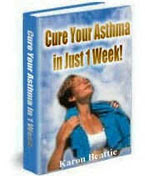It is likely that inhaled substances are the most important environmental factors contributing to the development of asthma in people with a genetic predisposition to the disorder. Leading suspects include allergens (substances that cause an allergic reaction;tobacco smoke, air pollution, and infectious agents such as viruses.
Asthma most often develops during childhood following exposure to one or more of these environmental factors, but it can also develop in adulthood. People who smoke, are exposed to irritating chemicals in the workplace, or suffer a particularly nasty respiratory infection may develop asthma in adulthood. Hormone replacement therapy in menopausal women is another risk factor: The Nurses’ Health Study, a large epidemiological study that has collected information about women’s health issues since 1976, found that menopausal women who were currently using or who had used estrogen replacement therapy had a 50% greater risk of developing asthma than those who did not take hormones. Often, however, there is no identifiable cause of adult-onset asthma. In some cases, the problem may have been present in childhood but was undiagnosed, or it may have been present in childhood, become dormant around adolescence, then resurfaced in adulthood.
The same environmental factors that are thought to incite asthmatic inflammation of the bronchial tubes in the first place can also cause subsequent asthma attacks. Learning to recognize and avoid your asthma triggers is an important part of managing the disorder
Monday, February 9, 2009
Subscribe to:
Post Comments (Atom)

No comments:
Post a Comment